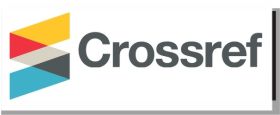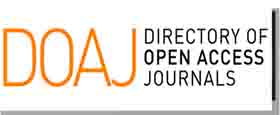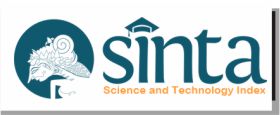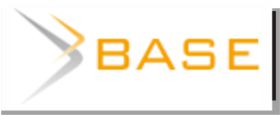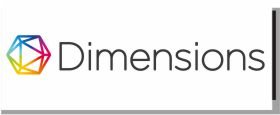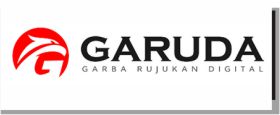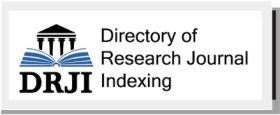Does brand image resonance as the determinant factor in cosmetic purchasing decision? A Case Study at Sari Ayu Cosmetic
Abstract
Keywords
Full Text:
PDFReferences
Ahmad, N. S., Musa, R., & Harun, M. H. M. (2016). The Impact of Social Media Content Marketing (SMCM) towards Brand Health. Procedia Economics and Finance, 37(16), 331–336. https://doi.org/10.1016/s2212-5671(16)30133-2
Allender, W. J., & Richards, T. J. (2012). Brand Loyalty and Price Promotion Strategies: An Empirical Analysis. Journal of Retailing, 88(3), 323–342. https://doi.org/10.1016/j.jretai.2012.01.001
Arifiansyah, R., Aulia, M., & Riyanto, A. (2020). The influence of product quality, atmosphere, and location on customer satisfaction at the Cafe Hotel Mulia Senayan. Panorama Nusantara, 15(2), 72–84. https://erepository.stein.ac.id/index.php/erepositorystein/article/view/190/191
Baumert, T., & de Obesso, M. de las M. (2021). Brand antiquity and value perception: Are customers willing to pay higher prices for older brands? Journal of Business Research, 123(October 2020), 241–254. https://doi.org/10.1016/j.jbusres.2020.09.060
Benigno, P., & Karantounias, A. G. (2019). Overconfidence, subjective perception and pricing behavior. Journal of Economic Behavior and Organization, 164(August 2019), 107–132. https://doi.org/10.1016/j.jebo.2019.05.029
Bilanakos, C., Heywood, J. S., Sessions, J., & Theodoropoulos, N. (2018). Does demand for product quality increase worker training? Journal of Economic Behavior and Organization, 155, 159–177. https://doi.org/10.1016/j.jebo.2018.08.018
Brashear-Alejandro, T., Kang, J., & Groza, M. D. (2016). Leveraging loyalty programs to build customer-company identification. Journal of Business Research, 69(3), 1190–1198. https://doi.org/10.1016/j.jbusres.2015.09.014
Buil, I., de Chernatony, L., & Martínez, E. (2013). Examining the role of advertising and sales promotions in brand equity creation. Journal of Business Research, 66(1), 115–122. https://doi.org/10.1016/j.jbusres.2011.07.030
Burmann, C., Jost-Benz, M., & Riley, N. (2009). Towards an identity-based brand equity model. Journal of Business Research, 62(3), 390–397. https://doi.org/10.1016/j.jbusres.2008.06.009
Byun, K. A. (Kay), Jones, R. P., & Wooldridge, B. R. (2018). It is not always about brand: Design-driven consumers and their self-expression. Journal of Retailing and Consumer Services, 43(December 2017), 296–303. https://doi.org/10.1016/j.jretconser.2018.04.009
Cheng, S. Y. Y., White, T. B., & Chaplin, L. N. (2012). The effects of self-brand connections on responses to brand failure: A new look at the consumer-brand relationship. Journal of Consumer Psychology, 22(2), 280–288. https://doi.org/10.1016/j.jcps.2011.05.005
Curzi, D., Schuster, M., Maertens, M., & Olper, A. (2020). Standards, trade margins and product quality: Firm-level evidence from Peru. Food Policy, 91(November 2019), 101834. https://doi.org/10.1016/j.foodpol.2020.101834
Eloranta, V., & Turunen, T. (2015). Seeking competitive advantage with service infusion: A systematic literature review. In Journal of Service Management (Vol. 26, Issue 3). https://doi.org/10.1108/JOSM-12-2013-0359
Fahy, J., Farrelly, F., & Quester, P. (2004). Competitive advantage through sponsorship. European Journal of Marketing, 38(8), 1013–1030. https://doi.org/10.1108/03090560410539140
Farzad, M., El Ferouali, H., Kahraman, O., & Yagoobi, J. (2020). Enhancement of heat transfer and product quality using jet reattachment nozzles in drying of food products. Drying Technology, 1–19. https://doi.org/10.1080/07373937.2020.1804927
Ferguson, J. L., Brown, B. P., & Johnston, W. J. (2017). Partitioned pricing, price fairness perceptions, and the moderating effects of brand relationships in SME business markets. Journal of Business Research, 72(March 2017), 80–92. https://doi.org/10.1016/j.jbusres.2016.11.001
Filice, R. W., Mongan, J., & Kohli, M. D. (2020). Evaluating Artificial Intelligence Systems to Guide Purchasing Decisions. Journal of the American College of Radiology, 17(11), 1405–1409. https://doi.org/10.1016/j.jacr.2020.09.045
Ghapanchi, A. H., Wohlin, C., & Aurum, A. (2014). Resources contributing to gaining competitive advantage for open source software projects: An application of resource-based theory. International Journal of Project Management, 32(1), 139–152. https://doi.org/10.1016/j.ijproman.2013.03.002
Guo, J., Wang, X., & Wu, Y. (2020). Positive emotion bias: Role of emotional content from online customer reviews in purchase decisions. Journal of Retailing and Consumer Services, 52(October 2018). https://doi.org/10.1016/j.jretconser.2019.101891
Gupta, S., Malhotra, N. K., Czinkota, M., & Foroudi, P. (2016). Marketing innovation: A consequence of competitiveness. Journal of Business Research, 69(12), 5671–5681. https://doi.org/10.1016/j.jbusres.2016.02.042
Hasan, S. F. e, Lings, I., Neale, L., & Mortimer, G. (2014). The role of customer gratitude in making relationship marketing investments successful. Journal of Retailing and Consumer Services, 21(5), 788–796. https://doi.org/10.1016/j.jretconser.2014.06.007
Huang, Y., & Huddleston, P. (2009). Retailer premium own-brands: creating customer loyalty through own-brand products advantage. International Journal of Retail & Distribution Management Retailer, 37(11), 975–992. https://doi.org/http://dx.doi.org/10.1108/09590550910999389
Huber, F., Vollhardt, K., Matthes, I., & Vogel, J. (2010). Brand misconduct: Consequences on consumer-brand relationships. Journal of Business Research, 63(11), 1113–1120. https://doi.org/10.1016/j.jbusres.2009.10.006
Hughes, P., & Morgan, R. E. (2007). A resource-advantage perspective of product-market strategy performance & strategic capital in high technology firms. Industrial Marketing Management, 36(4), 503–517. https://doi.org/10.1016/j.indmarman.2006.01.003
Hunt, S. D. (1997). Resource-advantage theory and the wealth of nations: Developing the socio-economic research tradition. Journal of Socio-Economics, 26(4), 335–357. https://doi.org/10.1016/S1053-5357(97)90001-9
Kim, J., Jhang, J., Kim, S. (Sam), & Chen, S. C. (2021). Effects of concealing vs. displaying prices on consumer perceptions of hospitality products. International Journal of Hospitality Management, 92(Januari 2021), 102708. https://doi.org/10.1016/j.ijhm.2020.102708
Kotler, P., & Armstrong, G. (2015). Principles of marketing-global edition. Pearson.
Liu, C.-H. S., & Lee, T. (2016). Service quality and price perception of service: Influence on word-of-mouth and revisit intention. Journal of Air Transport Management, 52(April 2016), 42–54. https://doi.org/10.1016/j.jairtraman.2015.12.007
Liu, Y., Fernandez, J., Pu, Z., Zhang, H., Cao, L., Aguilar, I., Ritz, D., Luo, R., Read, A., Laures, A., Lan, K., Ubiera, A., Smith, A., Patel, P., & Liu, A. (2020). Simultaneous Monitoring and Comparison of Multiple Product Quality Attributes for Cell Culture Processes at Different Scales Using a LC/MS/MS Based Multi-Attribute Method. Journal of Pharmaceutical Sciences, 109(11), 3319–3329. https://doi.org/10.1016/j.xphs.2020.07.029
Lv, Z., Jin, Y., & Huang, J. (2018). How do sellers use live chat to influence consumer purchase decision in China? Electronic Commerce Research and Applications, 28, 102–113. https://doi.org/10.1016/j.elerap.2018.01.003
Piveteau, P., & Smagghue, G. (2019). Estimating firm product quality using trade data. Journal of International Economics, 118, 217–232. https://doi.org/10.1016/j.jinteco.2019.02.005
Rybaczewska, M., Sparks, L., & Sułkowski, Ł. (2020). Consumers’ purchase decisions and employer image. Journal of Retailing and Consumer Services, 55(February), 0–7. https://doi.org/10.1016/j.jretconser.2020.102123
Shafeey, T. El, & Trott, P. (2014). Resource-based competition: Three schools of thought and thirteen criticisms. European Business Review, 26(2), 122–148. https://doi.org/10.1108/EBR-07-2013-0096
Steinhauser, J., Janssen, M., & Hamm, U. (2019). Consumers’ purchase decisions for products with nutrition and health claims: What role do product category and gaze duration on claims play? Appetite, 141(June), 104337. https://doi.org/10.1016/j.appet.2019.104337
Sugiyono. (2017). Metode Penelitian Kuantitatif, Kualitatif, dan R & D (Quantitative Research Methods, Qualitative, and R & D). Alfabeta.
Vargo, S. L. (2007). On A Theory of Markets and Marketing: From Positively Normative to Normatively Positive. Australasian Marketing Journal, 15(1), 53–60. https://doi.org/10.1016/S1441-3582(07)70029-0
Yu, Y., Wang, Y., & Liu, Y. (2020). Product quality and quantity with responsive pricing. International Journal of Production Research. https://doi.org/10.1080/00207543.2020.1836418
Zhang, H., Zhao, Z., Nie, B., Lyu, C., & Liu, X. (2021). Selenium loss and changes in product quality during cooking of selenium enriched potato tubers. Journal of Food Composition and Analysis, 96(1), 103728. https://doi.org/10.1016/j.jfca.2020.103728
Zhang, Z., Wang, P., & Xu, H. (2020). Executives’ preference for integrity and product quality: Evidence from the Chinese food industry. Economic Modelling, 90(Agustus 2020), 374–385. https://doi.org/10.1016/j.econmod.2019.11.026
DOI: https://doi.org/10.31334/bijak.v19i2.2113
Refbacks
- There are currently no refbacks.
Copyright (c) 2022 Majalah Ilmiah Bijak

This work is licensed under a Creative Commons Attribution-ShareAlike 4.0 International License.
View My Stats
ISSN 1411-0830 (Media Cetak) 2621-749X (Media Online)
Email : [email protected] / [email protected]
Website: http://ojs.stiami.ac.id/index.php/bijak/index
INDEKS BY:
|




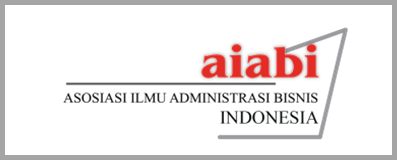




1.png)

